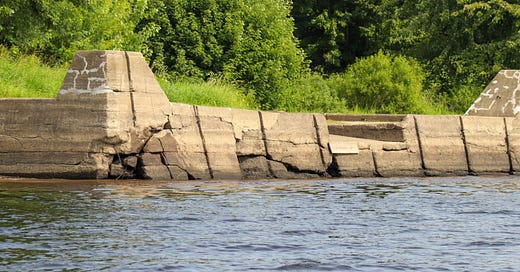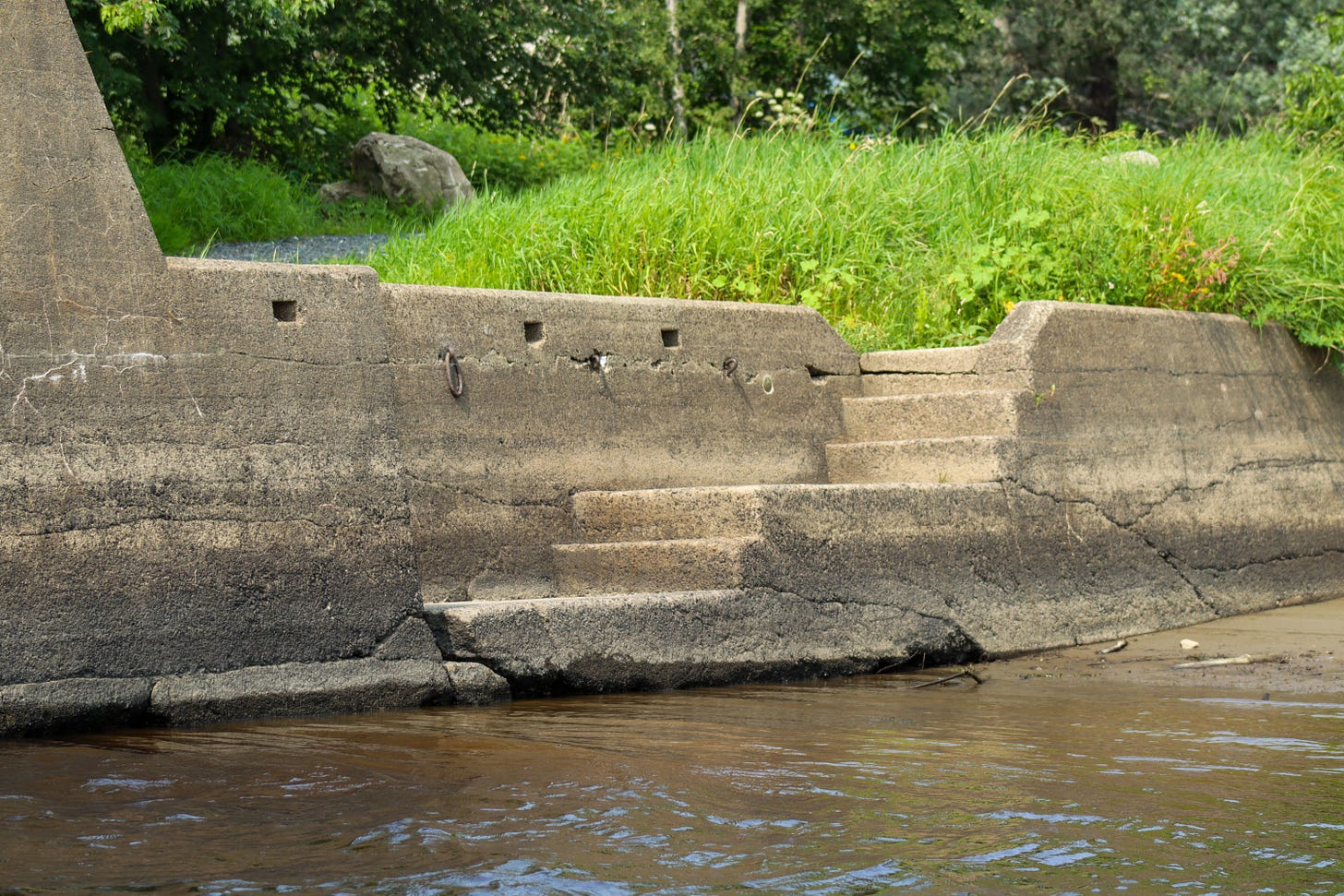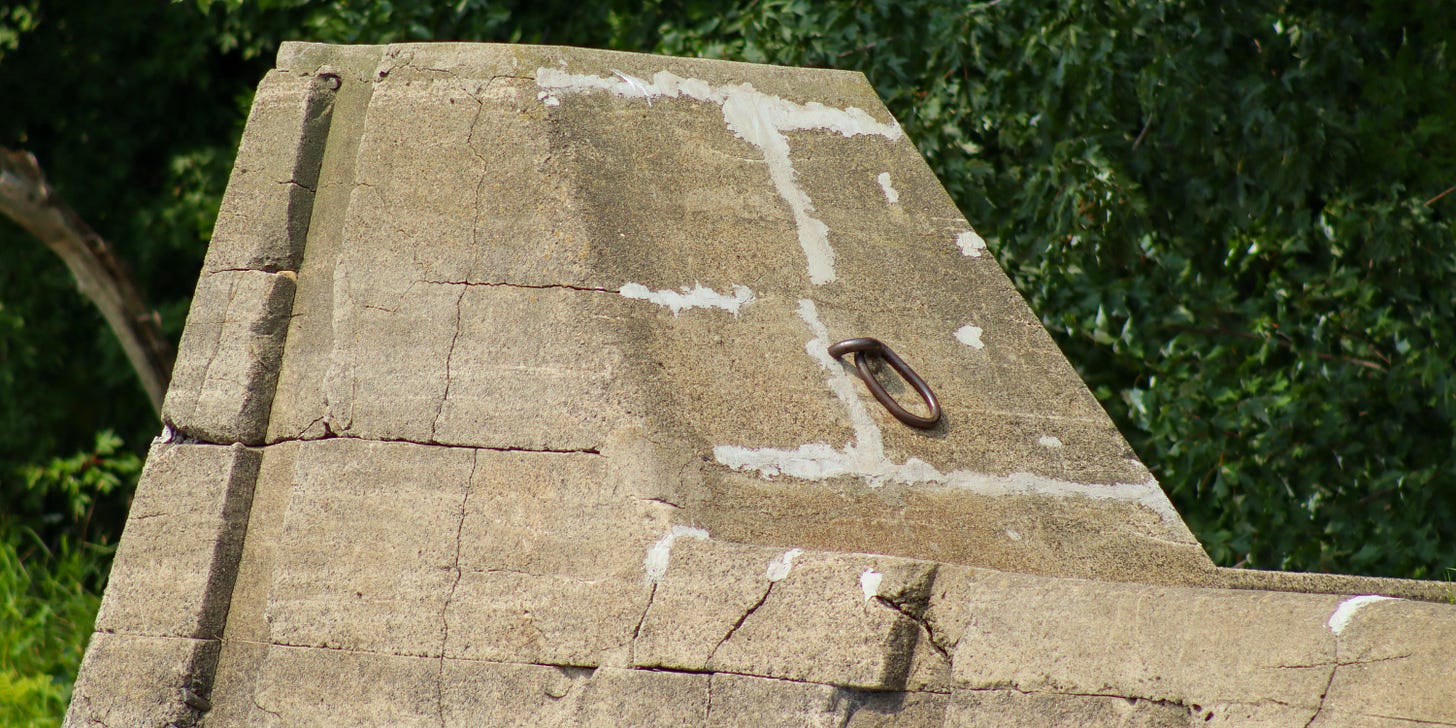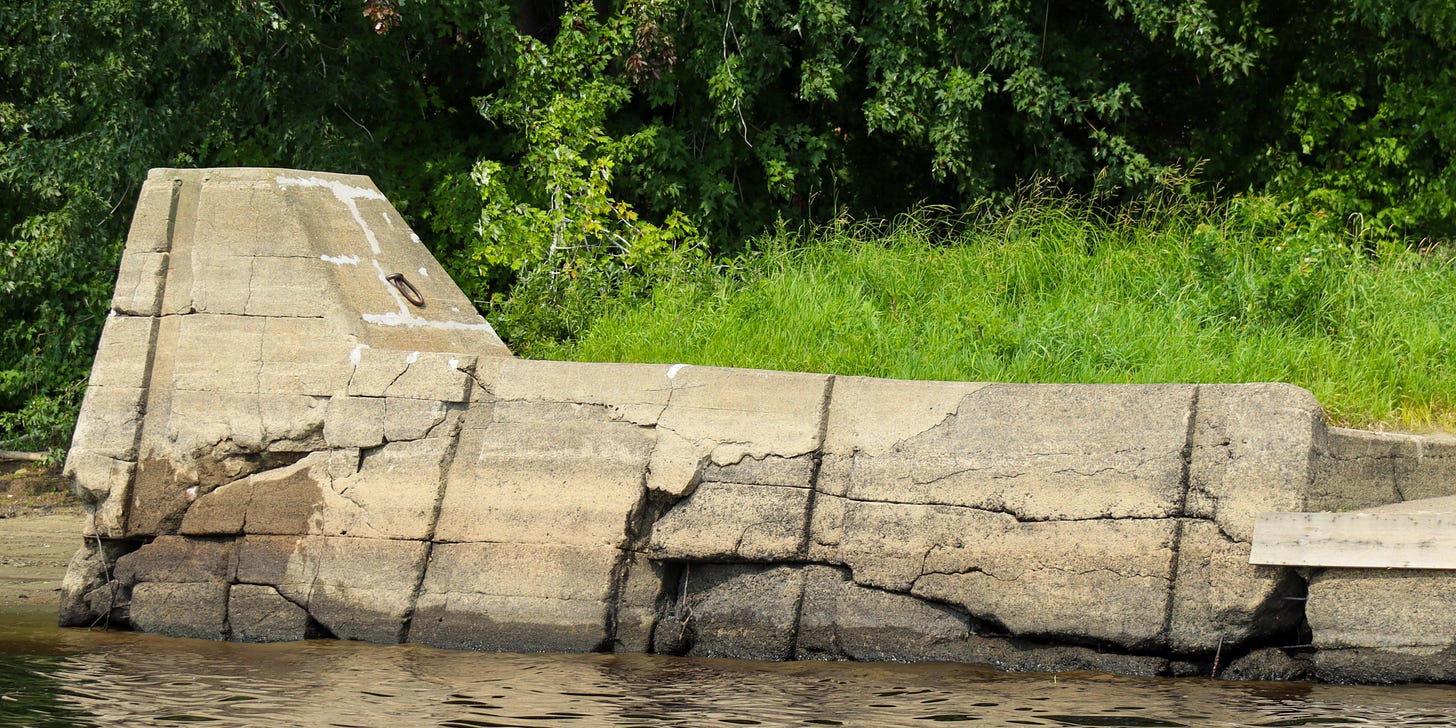Maugerville Low Water Wharf
The Maugerville Wharf is a low water wharf on the northern shore of the Lower Wolastoq in the Capital Region Rural District.
This week’s wharf profile is the fifth in a series of collaborations with the St. John River Society. Initially acquired when the Department of Fisheries and Ocean’s Small Craft Harbour Program began divesting itself of derelict, low activity, and/or recreational wharves in the late 1990s, the St. John River Society took ownership of thirteen steamboat wharves to maintain public access to the river.
The Society’s public wharves are undergoing major repairs this summer through a $970,000 grant from the Canada Community-Building Fund.1 Subscribe for free to receive future profiles directly in your inbox or check out the archived wharf profiles on previous Society wharves including Bedford, Gerow’s, Hampstead, and Public Landing.
The Maugerville low water wharf is one of a pair of wharves associated with the Maugerville area. It is 22 meters wide at the face and extends 20 meters from shore. There is a pier at either corner of the wharf face and a cargo slipway in the centre. There is a also a generous, multi-platform small craft access stair on the downriver side.
There are also a series of square holes in the side of the downriver wall. It’s possible that these are drainage points, Although I’m not positive. If that was their original function, it has been superseded by the addition of a more modern drainage system, a small white pipe that sits about a foot lower on the same wall. If any readers have insight into the purpose of these square holes, please share your thoughts in the comments.
Maugerville is a surprisingly common name when it comes to steamboat wharves. Unlike the wharves on the southern stretch of the Lower Wolastoq which tend to combine their high and low water sections into a single structure, wharves closer to Fredericton were constructed as bespoke high and low water structures spaced a few hundred meters apart. Accordingly, there is not just one but four Maugerville Wharves: two at Upper Maugerville and two at Maugerville proper.

The multiplicity of Maugervilles makes tracing the history of any one wharf a challenge. The earliest record I have come across that makes reference to Maugerville is from 1861 which references a $6 expense for gravelling the public wharf.2 Without further context it is unclear which of the four wharves is being referred to here.
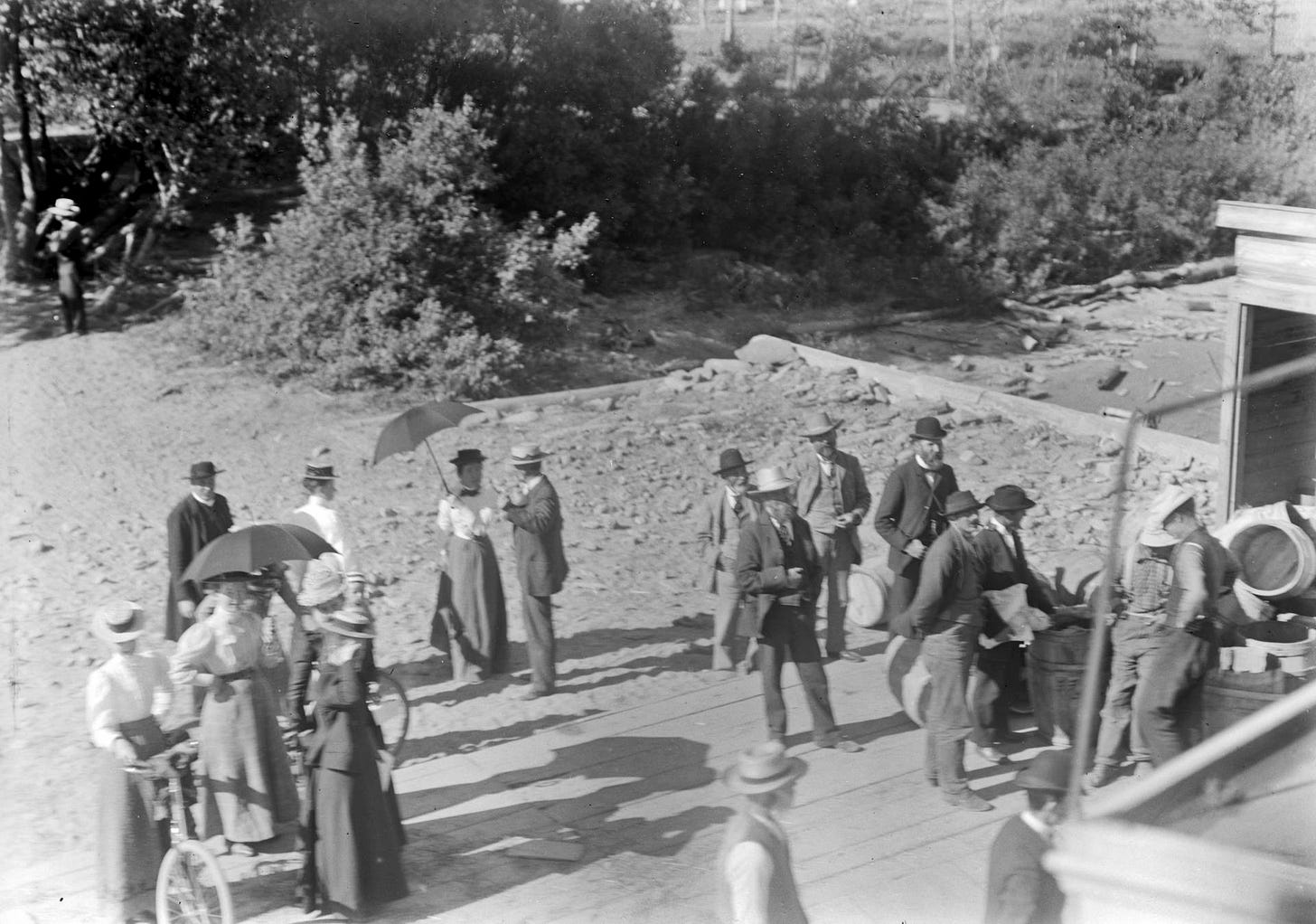
The Public Archives of New Brunswick have a few photographs from 1899 that appear to depict the Maugerville low water wharf.3 Although I haven’t managed to find any written descriptions of the wharf in the 19th century, based on these photographs, the dimensions of the original wooden wharf were quite similar to the concrete iteration. It appears that the upriver side featured a pitched ice guard at this time and there was no small craft access stair on the downriver side.
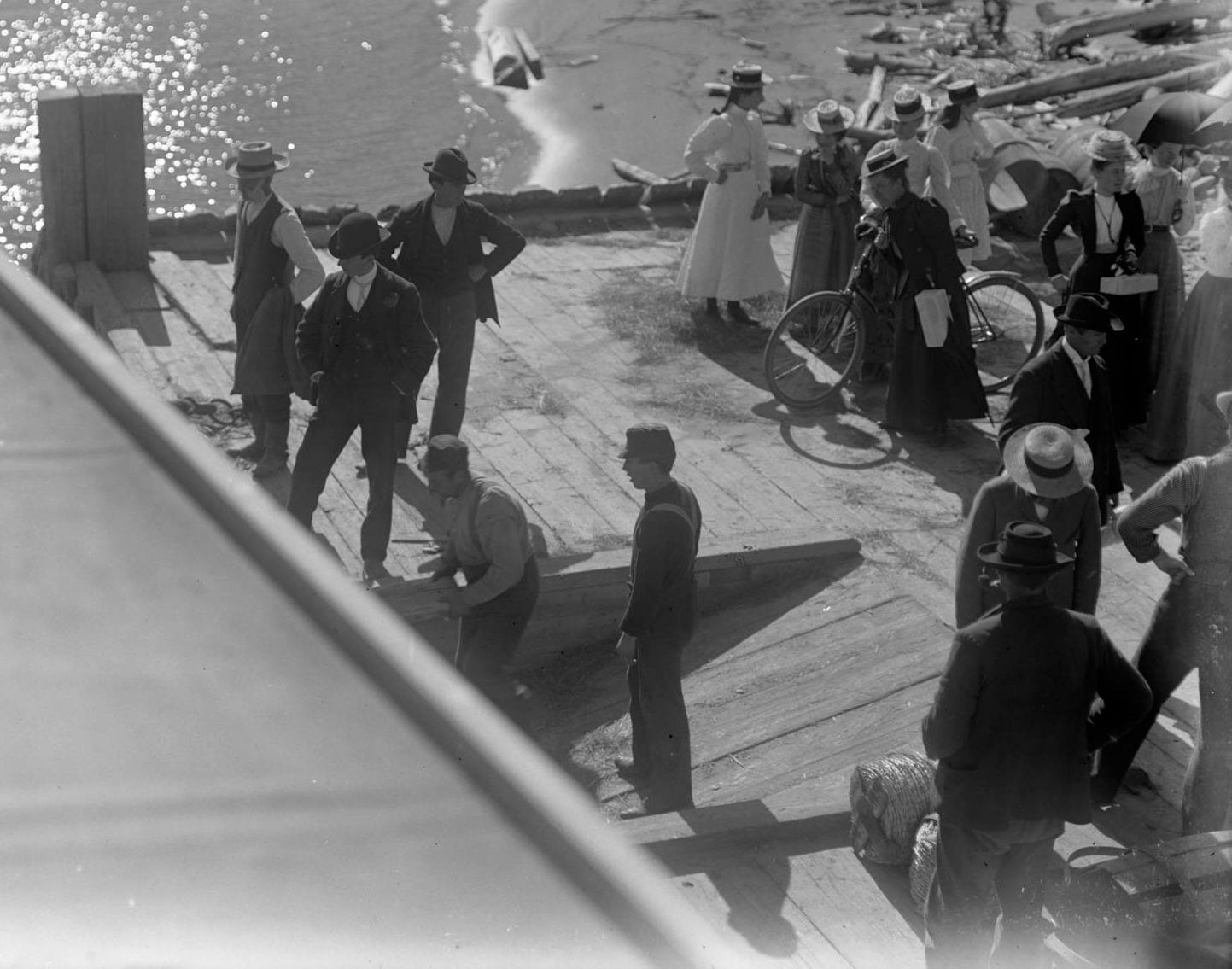
The wharf featured two corner piers, although these wooden iterations are substantially smaller than their concrete counterparts. Their comparatively slender profile and the presence of an ice guard indicates that these piers served primarily as mooring posts instead of fenders to guard against ice flows. This dual functionality would become more common later as the federal government began systematically upgrading wharves.4
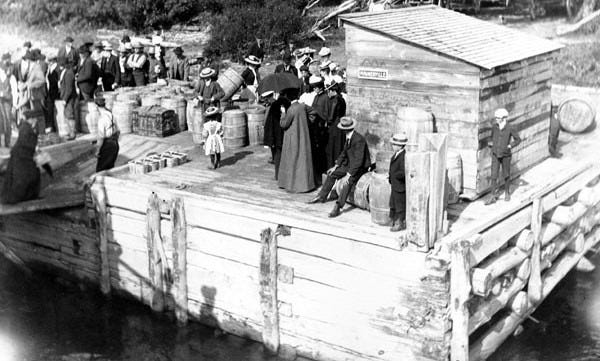
In 1911, Maugerville low water wharf was substantially renovated at a cost of $1590. If the date on the above photo is accurate, it does not appear that the overhaul substantially impacted the design of the wharf as all the key features appear to be unchanged. Sometime between 1930 and 1932, the wharf was overhauled again and upgraded with concrete.
Maugerville is one of a number of wharves being actively repaired by the St. John River Society this summer.5 When I visited in August 2024, there was evidence of targeted repair on the upriver corner pier, but more far reaching repairs comparable to Gerow’s are likely on the way. Most notably, the wharf face has degraded on the upriver side.
Beyond the comparatively lavish small craft access stair, the Maugerville low water wharf is a fairly generic structure. I don’t describe it this way to denegrate it - the twin piers provide the iconic silhouette that is associated with the wharves. When I picture a Lower Wolastoq wharf, this is exactly the set-up I think of. What Maugerville may lack in eccentricities it makes up in location. The separate high and low water wharves mean that the area around Oromocto has an especially high concretration of wharves. It is an ideal place for wharf tourists — a niche category of traveller that I hope includes or will come to include the readers of this blog.
Jeanne Armstrong, “A century ago, river wharfs were a lifeline for residents. Now they’re getting a facelift,” CBC News, July 24, 2024, https://www.cbc.ca/news/canada/new-brunswick/saint-john-river-wharfs-facelift-1.7272506.
Seventh Annual Report of the Chief Commissioner of Public Works, New Brunswick 1861 in Journal of the House of Assembly of the Province of New Brunswick (Saint John, New Brunswick: Barnes and Company, 1862), 27.
It is possible that these are pictures of the Upper Maugerville low water wharf, but the shoreline and wharf design are a better match for Lower Maugerville.
I will go into this in more detail at a future date when I write about the functionality of the wharves’ iconic piers.
Correspondence with Ed Coy, member of the St. John River Society’s wharf preservation committee.


